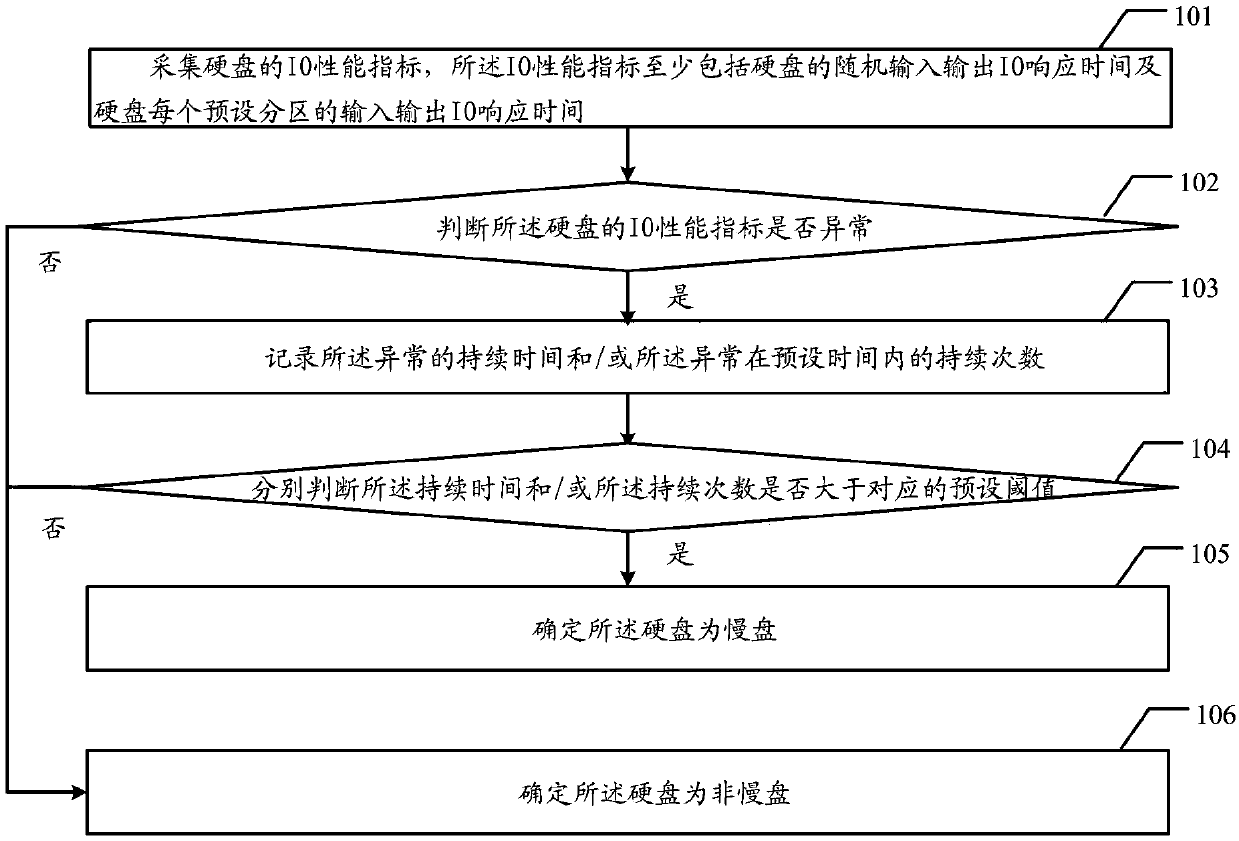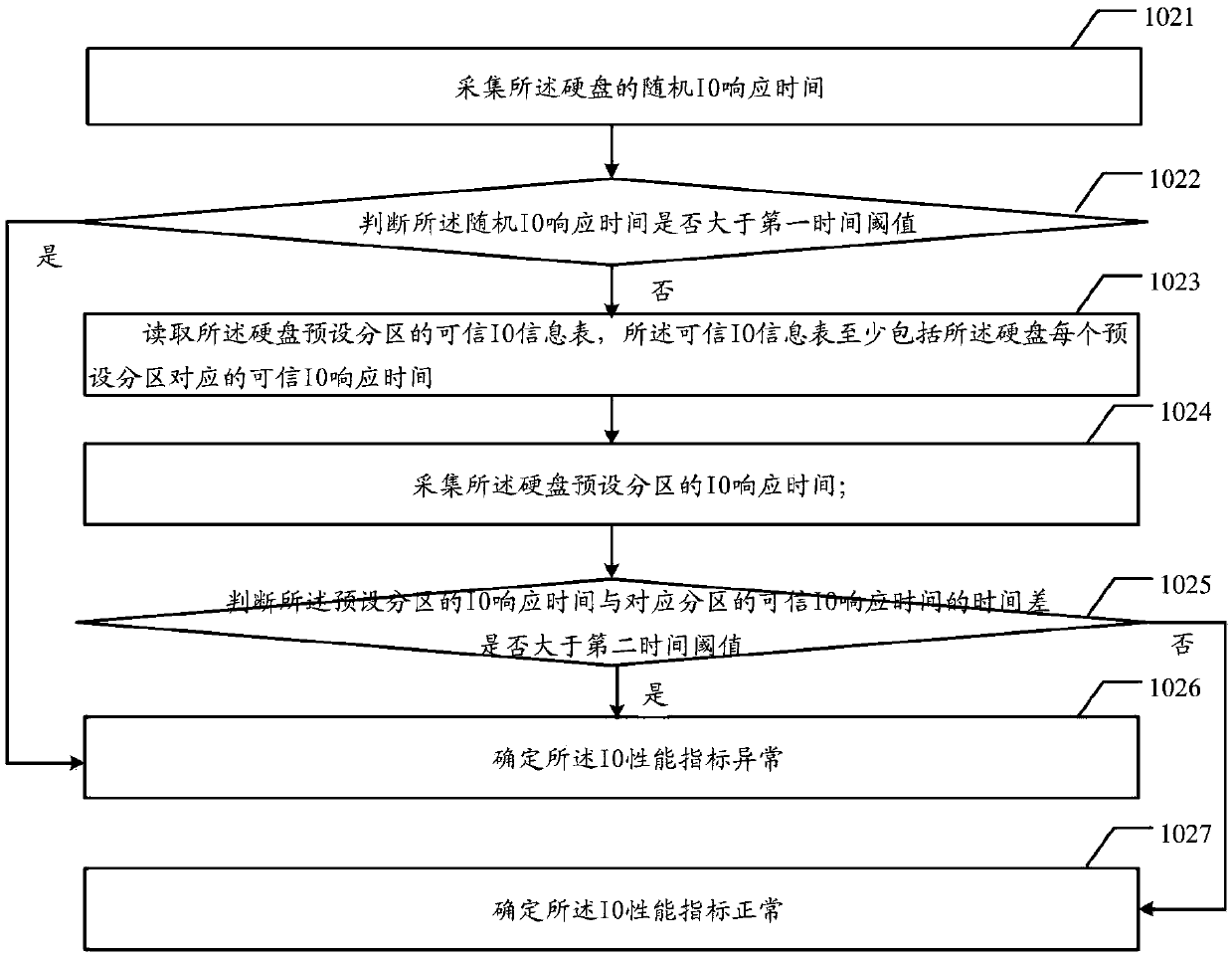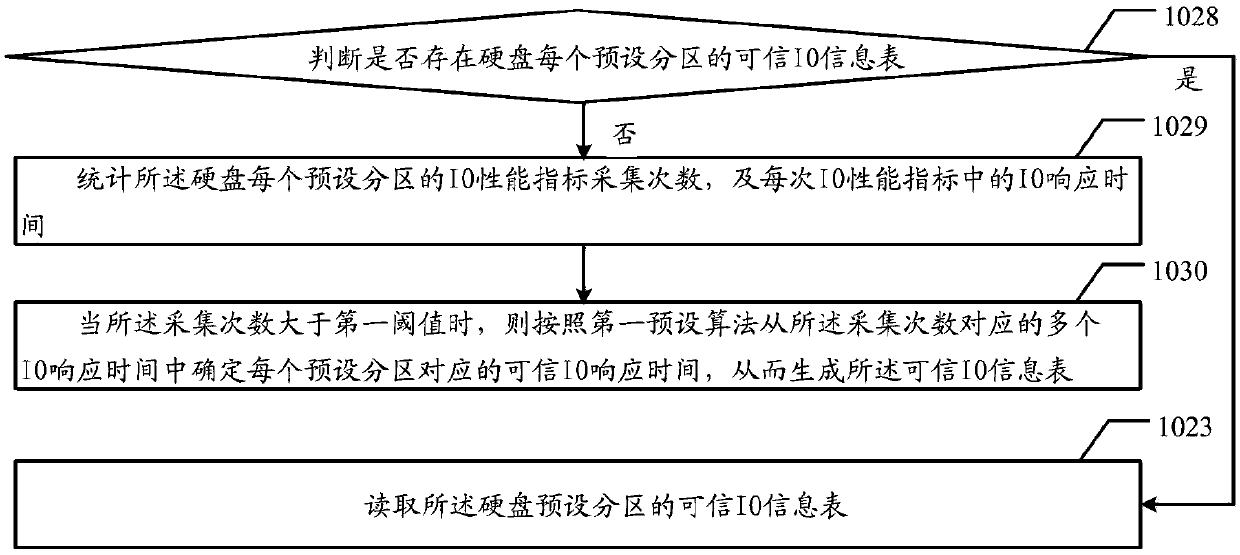Slow disk detection method and system
A detection method and hard disk technology, applied in the field of slow disk detection methods and systems, can solve the problem of high misjudgment rate, and achieve the effects of improving the accuracy rate, reducing the missed judgment rate and the misjudgment rate.
- Summary
- Abstract
- Description
- Claims
- Application Information
AI Technical Summary
Problems solved by technology
Method used
Image
Examples
Embodiment Construction
[0073] The embodiment of the present invention provides a slow disk detection method and system, which are used to detect the slow disk phenomenon in the hard disk by adopting the method of random detection and partition detection, and only when the duration of the slow disk phenomenon exceeds the preset threshold Determining that the hard disk is a slow disk improves the accuracy rate of slow disk detection and reduces the rate of missed judgment and misjudgment rate of slow disk detection.
[0074] In order to enable those skilled in the art to better understand the solutions of the present invention, the following will clearly and completely describe the technical solutions in the embodiments of the present invention in conjunction with the drawings in the embodiments of the present invention. Obviously, the described embodiments are only It is an embodiment of a part of the present invention, but not all embodiments. Based on the embodiments of the present invention, all o...
PUM
 Login to View More
Login to View More Abstract
Description
Claims
Application Information
 Login to View More
Login to View More - R&D
- Intellectual Property
- Life Sciences
- Materials
- Tech Scout
- Unparalleled Data Quality
- Higher Quality Content
- 60% Fewer Hallucinations
Browse by: Latest US Patents, China's latest patents, Technical Efficacy Thesaurus, Application Domain, Technology Topic, Popular Technical Reports.
© 2025 PatSnap. All rights reserved.Legal|Privacy policy|Modern Slavery Act Transparency Statement|Sitemap|About US| Contact US: help@patsnap.com



